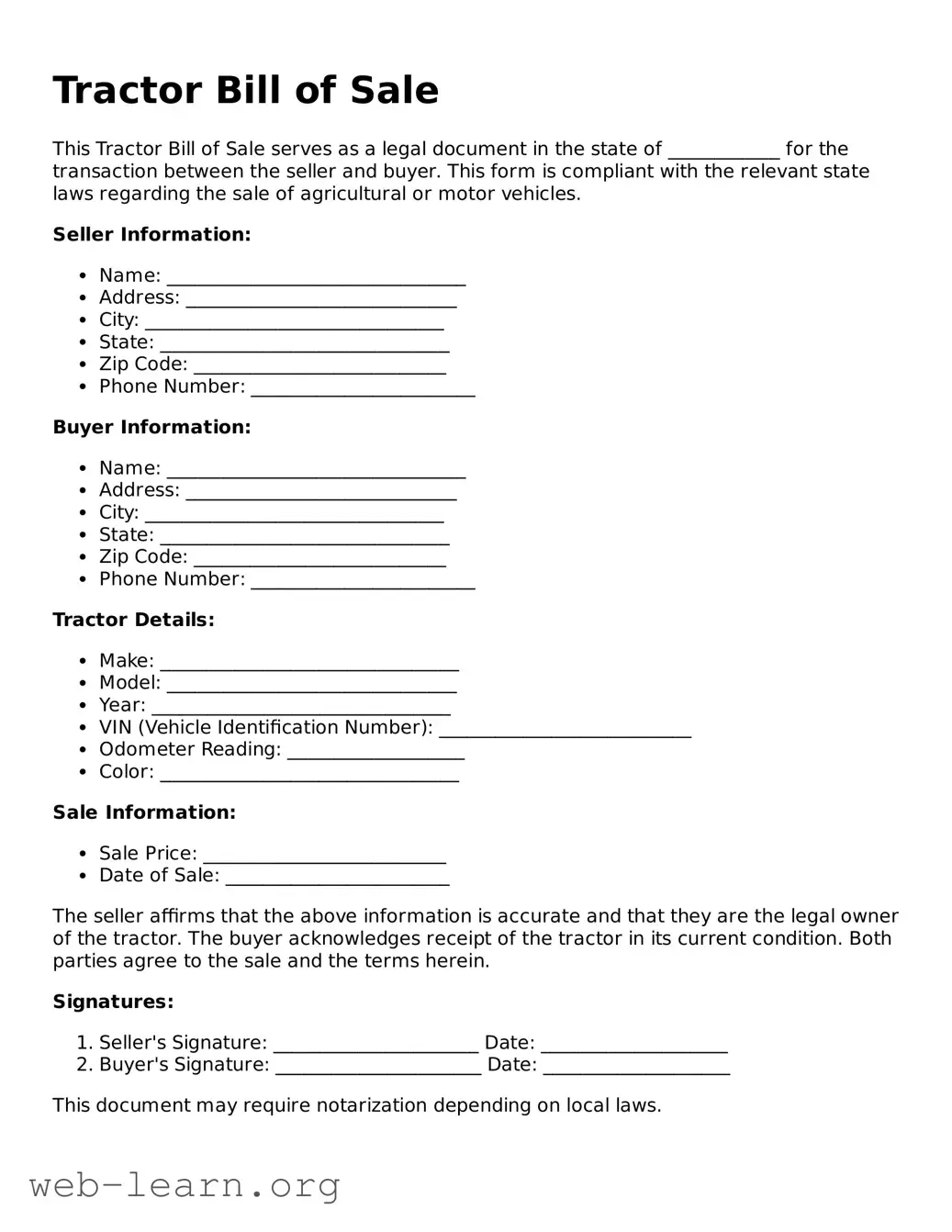Filling out a Tractor Bill of Sale form requires attention to detail and a clear understanding of the information being conveyed. One common mistake occurs when individuals neglect to include all essential details about the tractor itself. Important information such as the make, model, year, and Vehicle Identification Number (VIN) may be omitted. This information is critical for establishing the identity of the tractor, which helps prevent disputes over ownership.
Another frequent error involves the misrepresentation of the sale price. Buyers and sellers sometimes fail to align on the actual amount agreed upon. A discrepancy in the reported sale price can lead to complications, especially for tax purposes. It is imperative that the form reflects the true sale price to ensure transparency and compliance with tax regulations.
Additionally, individuals often overlook the necessity of both parties’ signatures. A Bill of Sale is not legally binding without the signatures of both the seller and the buyer. Failing to include these signatures can render the document ineffective, which complicates the transfer of ownership and could lead to future legal issues.
Another mistake is the incorrect dating of the document. The date on the Tractor Bill of Sale should reflect the actual transaction date. When this is not properly recorded, it could cause confusion regarding when the transfer of ownership occurred, potentially impacting warranties and liabilities related to the tractor.
Inconsistent or unclear descriptions of the tractor can also lead to misunderstandings. Instead of providing vague descriptions, individuals should aim for clarity. Details such as color, condition, and any included accessories matter. Clear descriptions help protect the interests of both the buyer and seller.
Some individuals mistakenly assume that their state's specific requirements for a Bill of Sale are uniform. Each state may have different regulations regarding documentation and necessary details. Therefore, failing to verify local requirements is a mistake that can lead to legal and administrative complications.
Lastly, neglecting to keep a copy of the completed Tractor Bill of Sale can be a significant oversight. Both the buyer and seller should retain a copy for their records. This record provides essential documentation of the transaction and serves as proof of ownership transfer if any disputes arise in the future.
